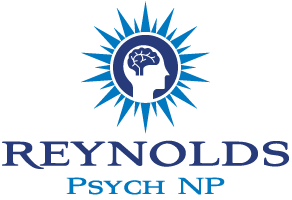Mental health can be overwhelming. When you’re in the thick of it, trying to find the right kind of help can feel like another mountain to climb. Between all the terms and categories, it’s easy to feel lost. One phrase you might’ve seen again and again is “levels of care in mental health.”
But what does that really mean? And how do you know what you need?
We’re going to break it down, and we’ll at how the mental health system works, and what kind of care is out there, depending on where you’re at.
Why the Term “Levels of Care” Matters
Think about it like this: not all problems need the same kind of help. You wouldn’t treat a sprained ankle the same way you’d handle a broken leg, right?
Mental health is no different.
The term “levels of care in mental health” simply refers to the different types of treatment someone might need depending on the intensity of their symptoms, their daily functioning, and what kind of support is available to them. It’s a flexible, evolving system designed to meet people exactly where they are, whether they’re just starting to feel off or are in deep crisis.
And believe me, wherever you’re at on that spectrum, there’s a path forward.
A Realistic Example
Meet Cassie. She’s 17 and struggling with panic attacks and insomnia. After a Disability Assessment, her provider recommends an IOP that fits around school hours. She meets with peers, gains coping tools, and starts sleeping again. Her grades improve. So does her confidence.
This isn’t a “push through it” moment anymore. This is when understanding levels of care in mental health can literally change the game.
Because there’s a treatment path for Cassie, and for you. It just depends on how much support is needed right now.
Let’s Break Down the Levels of Care in Mental Health
Here’s a straightforward look at the main levels, from least to most intensive:
| Level of Care | What It Looks Like | Who It Helps |
| Outpatient Therapy | Weekly or biweekly talk therapy. Could be in-person or via telehealth. | People with mild symptoms or solid coping skills. |
| Intensive Outpatient Program (IOP) | Several hours of therapy, 3–5 days/week, but you still live at home. | Moderate symptoms. When weekly therapy just isn’t enough |
| Partial Hospitalization Program (PHP) | A full-day program (think 9–3) for 5 days/week. Still go home at night. | People need structured care without a hospital stay. |
| Residential Treatment | Live-in program with 24/7 support in a non-hospital setting. | Persistent, severe symptoms where home isn’t a safe or healing environment. |
| Inpatient Hospitalization | Levels of psychiatric care in a hospital. Usually short-term and crisis-focused. | Immediate safety risks, like suicidal thoughts or psychosis. |
These are the five key levels of care in mental health, but they’re not set in stone. People move up or down depending on their needs. It’s about staying connected to the right kind of help.
How Do You Know What Level You Need?
This is where a thorough psychiatric evaluation comes in. When you speak to a professional, they’re looking at a few main factors:
- Are your symptoms interfering with work, school, or relationships?
- Are you safe? Are others around you safe?
- Have lower-intensity treatments (like weekly therapy) been enough?
- Do you have a strong support system at home?
Sometimes the answer is clear. Other times, it takes a little time to assess. This is something we take seriously. No rushing. No assumptions. Just sitting down with you, whether in-person or via telehealth, and figuring out what’s best for you. These aren’t easy questions. But they matter. If you’re unsure where to start, you can consider scheduling an Initial Psychiatric Evaluation to get a clear understanding of where you stand.
When Outpatient Isn’t Cutting It
So, when is it time to look at higher levels of care in mental health?
It’s often hard to tell. A lot of people stay in weekly therapy far longer than they should because they think, “This is just how life is now.” But if you’re experiencing any of these, it may be time to explore more support:
- You’re missing school, work, or major responsibilities
- Sleep and appetite are totally off.
- You’re having intense panic attacks or dissociation.
- You’ve had thoughts of harming yourself or others.
- Your current therapist or psychiatrist says you’re not progressing
There’s no shame in stepping up your care. In fact, it’s one of the strongest, clearest signs of self-awareness and courage.
Can Telehealth Support Different Levels of Care?
Yes, and that’s been a game changer, especially post-2020.
At lower levels of care in mental health, like outpatient therapy or even some IOPs, telehealth can provide incredible flexibility. You don’t have to commute. You don’t have to deal with waiting rooms. And for folks in rural areas (hello, Wisconsin), telehealth is often the only way to access specialized care.
That’s exactly why we began with a telehealth model, because good care shouldn’t be out of reach just because of where you live.
Moving Between Levels
Levels of mental health recovery aren’t a straight line. You may start in an IOP, then step down to outpatient. You might spend time in PHP, stabilize, and later return when life throws a curveball.
That’s normal. That’s human. That’s okay.
Think of levels of care mental health as a ladder, not something to race up or down, but a tool to help you keep climbing, at your own pace, toward a place that feels more like you again.
The Money Talk
We get it, insurance can feel like a confusing mess. But here’s the encouraging part: most major plans do cover a range of levels of care in mental health. Yes, even IOP, PHP, and sometimes residential.
We accept most private insurance plans. But more importantly, we help you understand what’s covered and what your options are. You should never have to choose between your mental health and your financial stability. Not ever.
Let’s Take a Breath
Maybe this is the first time you’ve really looked into mental health levels of care, and it feels a little overwhelming. Or maybe you’ve been in therapy for years and just realized you might need a shift. Either way, there’s no wrong moment to ask for more support.
We don’t heal by pretending we’re fine. We heal by getting honest, asking for help, and allowing ourselves to be human. And suppose you’re struggling to stay on the job due to mental health symptoms. In that case, you might also be eligible for an FMLA Evaluation and Disability Evaluation to explore protections and accommodations.
Where We Fit In
We believe in cookie-cutter care. Every person we see, whether they’re 6 or 65, gets a treatment plan built around who they are and what they need right now. That might mean outpatient therapy. It might mean a referral to a PHP or helping coordinate telehealth IOP. Whatever it is, we walk through it with you. No judgment. Just support.
Our roots are in Wisconsin. Our reach is growing. And our mission stays the same: compassionate, personalized mental health care that actually fits your life.
Final Word
You don’t have to wait for a full-blown crisis to take your mental health seriously. Understanding the different levels of care in mental health is like getting a map when you’ve been wandering in the dark. It doesn’t solve everything overnight, but it helps you find your way.
Whether you’re just starting to ask questions or you’re ready to take the next step, know this: the right level of care is out there, and so is your healing. Reach out at [email protected] or call (262) 999-7350 to get started. And when you’re ready, Reynolds Psych NP is here to help you take that first step, at your own pace, in your way.
Frequently Asked Questions
Do I need a doctor’s referral for higher care levels?
Not always. A thorough levels of mental health treatment assessment is usually enough.
Are kids and teens eligible for these programs?
Yes. There are age-specific outpatient, IOP, and even PHP programs.
Can I switch between levels if things change?
Absolutely. Your care plan should evolve with your needs.
How long do people usually stay in PHP or IOP?
It varies, but typically 4 to 8 weeks, depending on your progress.
What’s the difference between inpatient and residential care?
Inpatient is hospital-based and focused on crisis stabilization. Residential is longer-term and more home-like.







